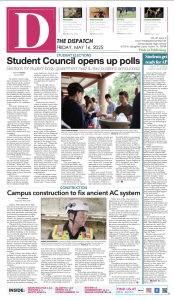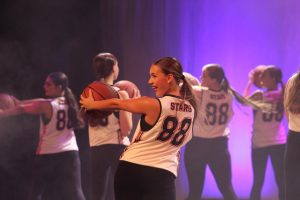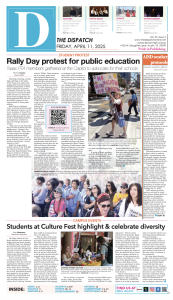Bowie students tutor children at Dawson Elementary
March 4, 2018
Waking up at five a.m. to teach science at Dawson Elementary, a dedicated team of Bowie High School students had the opportunity to relive the magic that the innocence of 5th grade brought with it by viewing the naiveté each of them once had.
It began with senior Madee Feltner going to a summer science camp at UT. There, Feltner got in touch with students from LASA High School, who were seeking new members for the Health and Science Pipeline Initiative (HASPI), a program to educate tier one, low-income school fifth graders on ways to stay healthy given the rapid increase in Type 2 diabetes.
“At the beginning of each visit, we do presentations over a certain health topic, [such as] vitamins you should be getting, exercise, etc.,” Feltner said. “We promote health-based topics for their science fair projects.”
From there, Feltner gathered a team of Bowie juniors and seniors who would be willing to help the children develop unique science fair projects centered around the health topics they learned.
“I thought it was especially cool because I love tutoring and I’ve done tutoring in the past, but I’ve never actually had the chance to work with kids, or to go outside of Bowie and engage in a larger community environment,” senior Sofia Hutton said. “It’s so great to be able to connect with kids from all walks of life and all over Austin.”
In the program, Hutton found new ways to both keep the kids listening and to further her own perspectives on children.
“It’s really cool to see that passion, and that kind of childhood fascination with learning,” Hutton said. “It’s very interesting to see how kids have at first a naive perspective on their interests; their passions. (they wanted to actually build one of those giant robots that can move, can walk, can talk, etc.). But then quickly you kind of realize: ‘oh wow, it’s just what they want to do’ – when they get older they want to actually create this and do that.”
As time passed, Feltner’s team found that the children’s creativity and curiosity weren’t inhibited by their school’s low socio-economic status.
“I’ve been to the other elementary schools around this area, and they’re pretty high tier, but when you go to Dawson, a tier one school, their breakfast is provided for them [the students],” Gorrie said. “In elementary school, I’m sure you had to buy a trifold for your science fair project – they don’t have to do that. Everything is provided for them, so they don’t have any sort of disadvantage. I still related to all of them, regardless of [them being] tier one.”
The children’s curiosity and capacity for learning more than surpassed the expectations of the volunteers.
“It’s why I wake up at five in the morning to go do it, because it’s just so great because the kids are so great,” Gorrie said. “I’m amazed. One kid, the project he was doing, his idea was to do sleep patterns in regards to what color of light is on at night, and how you sleep with that light. And I said, ‘that’s great! Let’s go ahead and do some background research.’ and he looked it up and said: ‘aw, dang it, it’s already been done’ and I asked him who did it and he told me Harvard.”






